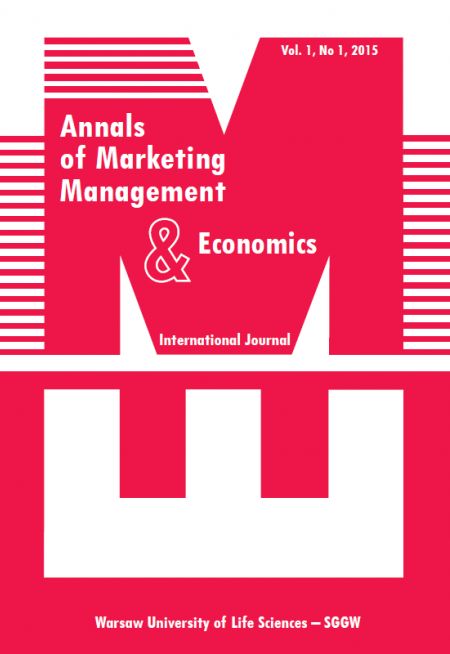Main Article Content
Article Details
Akmayeva R., 2009. Innovative Management, Feniks, Rostov na Donu.
Cooper R., 2011. Winning at New Products: Creating Value Through Innovation, Basic Books.
Fathutdinov R.A., 1998. Innovative Management, Intel-Syntez, Moscow.
Illiashenko S.M., PROKOPENKO O.V., 2003. Formation of the Market of Environmental Innovations, Economic Foundations Management, Vydavnytstvo SumDU, Sumy.
Kovtun O., 2013. Innovative Strategies of Enterprises: Theoretical and Methodological Foundations, Economics of Ukraine 4 (617), 44-56.
Krikovtseva N., 2011. Marketing Differentiators for Innovation and Their Implementation in Forming Enterprise Strategy, Marketing And Management of Innovations 4, Part 1, 185-189.
Larina Y.S., 2008. Formation and Mechanisms for the Implementation of Marketing Strategies in the Agro-Food Subcomplex of Agrarian Business, Press of Ukraine, Kyiv.
Mocherny S.V., Larina Y.S., Ustenko A.A., Yurii S.I., 2005. Economic encyclopedic dictionary, World, Lviv.
Pavlenko I.A., 2006. Economics and organisation of innovative activity, KNEU, Kyiv.
Prosvirina A., 2015. FMCG Branding. Strategies of leading brands, retrieved from https://koloro.ua/blog/brending-i-marketing/fmcg-brending-osobennosti-i-tendencii-rynka.html [accessed: 17.02.2017].
Rafinejad D., 2007. Innovation, Product Development and Commercialization: Case Studies and Key Practices for Market Leadership, J. Ross Publishing.
Sandberg B., 2008. Managing and Marketing Radical Innovations: Marketing New Technology, Routledge, New York. (Crossref)
Schumpeter J.A., 2011. The theory of economic development: an inquiry into profits, capital, credit, interest and the business cycle, Mohyla Academy Publishing, Kyiv.
Simahina G., Naumenko N., 2015. Innovations in Food Technology, Products and Markets 1, 189-201.
Twiss C.B., 1986. Managing Technological Innovation, Prentice Hall, Upper Saddle River.
Reports of State Statistics Committee of Ukraine, retrieved from http://ukrstat.gov.ua/druk/publicat/kat_u/publnauka_u.html [accessed: 17.02.2017].
Zabolotskyj B.F., 2007. Economics and the Organization of Innovation, Novyj Svit 2000, Lviv, Ukraine.
Downloads
- Valentyna Rafalska, Yaroslava Larina, The place of lessors of land shares in the system of agricultural marketing in Ukraine , Annals of Marketing Management & Economics: Vol. 3 No. 2 (2017)

This work is licensed under a Creative Commons Attribution 4.0 International License.





